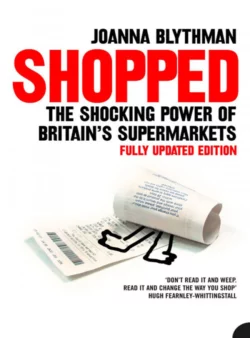Shopped: The Shocking Power of British Supermarkets

Joanna Blythman
Тип: электронная книга
Жанр: Зарубежная деловая литература
Язык: на английском языке
Стоимость: 1252.89 ₽
Статус: В продаже
Издательство: HarperCollins
Дата публикации: 16.04.2024
Отзывы: Пока нет Добавить отзыв
О книге: An elegant demolition of the supermarket miracle, this book charts the impact that supermarkets have had on every aspect of our lives and culture.Did you know…• Almost 50% of supermarket fruit and vegetables contain pesticide residues?• UK supermarkets make 40p on every £1 spent on bananas while plantations workers are paid just 1p?• Supermarkets instill a climate of fear amongst their suppliers?• Every time a supermarket opens the local community loses on average 276 jobs?In the 1970s, British supermarkets had only 10% of the UK′s grocery spend. Now they swallow up 80%, influencing how we shop, what we eat, how we spend our leisure time, how much rubbish we generate, even the very look of our physical environment.Award-winning food writer Joanna Blythman investigates the enormous impact that these big box retailers are having on our lives. She meets the farmers who are selling food to supermarkets for less than they need to survive and the wholesalers who have been eliminated from the supply chain; she travels to suburban retail parks to meet the teenagers and part-timers who stack our shelves and reveals the hoops third world suppliers must jump through to earn supermarket contracts.This thought-provoking, witty and sometimes chilling voyage of discovery is sure to make you think twice before you enthusiastically reach for that supermarket trolley again.Contains new material on the ‘Tesocisation’ of Britain.